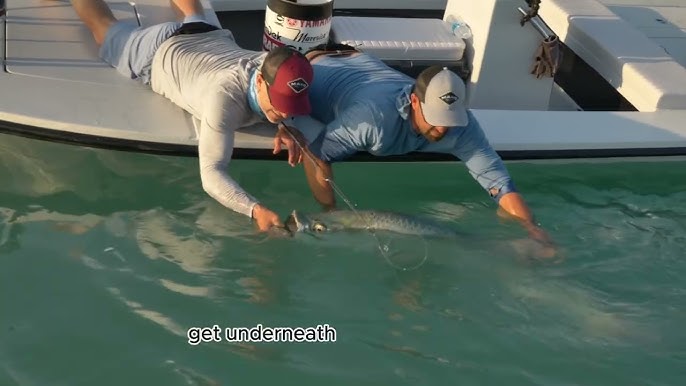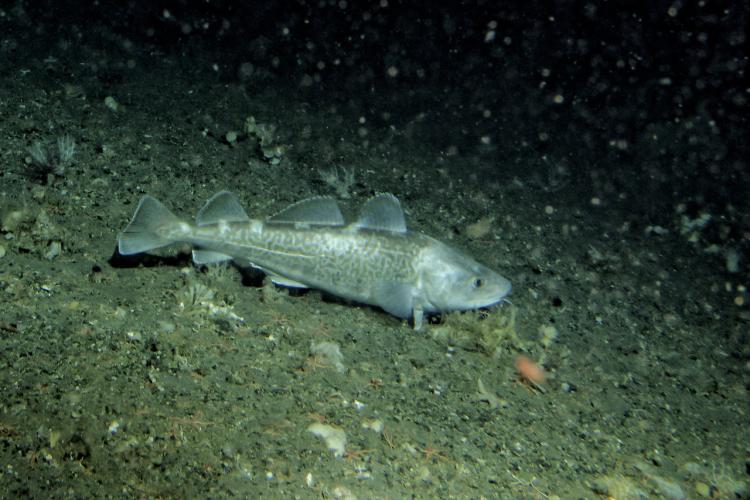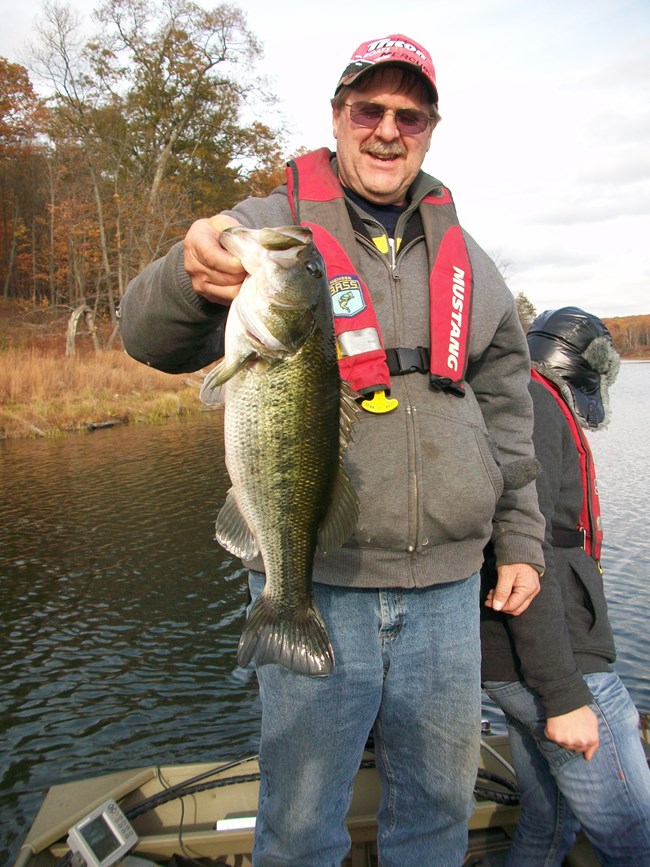How To Keep Fishing Rod Guides From Freezing
To keep fishing rod guides from freezing, apply a thin layer of oil to the guides before each use. Introduction (121 words): Staying warm on cold fishing trips can be challenging, but it becomes even more frustrating when your fishing rod guides freeze up.
These guides, which are small loops that help direct the fishing line along the rod, can become troublesome when ice forms on them. Not only does it hinder your casting ability, but it can also lead to damage to your fishing line.
However, there is a simple solution to this problem. By applying a thin layer of oil to the guides before each fishing trip, you can prevent them from freezing. This easy step will help keep your guides ice-free and ensure smooth and effective casting throughout your expedition. We will discuss in detail how to prevent fishing rod guides from freezing and the benefits of doing so.
Why Do Fishing Rod Guides Freeze?
Fishing rod guides freeze due to water freezing on the surface. To prevent this, you can keep the guides from freezing by regularly wiping them dry and applying a thin layer of lubricant like silicone spray.
When you’re out on the water, the last thing you want is for your fishing rod guides to freeze up. Not only is it frustrating, but it can also hamper your fishing experience. So, let’s explore the causes behind freezing rod guides to help you understand why this happens and how you can prevent it.
Causes Of Freezing Rod Guides:
- Temperature fluctuations: Fluctuations in temperatures play a significant role in freezing rod guides. When the temperature drops rapidly, the moisture in the air condenses and freezes on the guides, leading to ice buildup. This can be particularly common during winter fishing or in colder climates.
- Moisture exposure: Moisture is another culprit behind freezing rod guides. Whether it’s from rain, splashes, or just being in a humid environment, excessive moisture on your fishing rod can freeze on the guides, causing them to become encased in ice.
- Condensation buildup: Condensation occurs when warm and cold surfaces meet. During fishing activities, temperature differentials can cause condensation to form on the rod guides. If not promptly addressed, this condensation can freeze, hindering the smooth movement of your fishing line.
To prevent freezing rod guides, consider the following tips:
- Regularly wipe down your fishing rod guides with a clean cloth to remove any moisture or ice buildup that may have formed.
- Apply lubricant or specialized anti-icing products to the guides. These products can prevent ice from accumulating on the guides, keeping them free and allowing your line to flow smoothly.
- Keep your fishing rod in a rod bag or protective cover when not in use to shield it from moisture and temperature fluctuations.
- Avoid exposing your fishing rod to extreme temperatures whenever possible. If fishing in very cold conditions, periodically check and clear any ice that has formed on the guides.
Understanding why fishing rod guides freeze is crucial for preventing this frustrating issue. By being aware of temperature fluctuations, moisture exposure, and condensation buildup, you can take proactive steps to keep your rod guides ice-free and enjoy a seamless fishing experience.
Importance Of Preventing Rod Guide Freezing
Preventing rod guide freezing is vital for fishermen to ensure smooth casting and reeling. By regularly cleaning and applying lubricant to fishing rod guides, anglers can avoid ice build-up, allowing for successful and efficient fishing even in freezing conditions.
When it comes to fishing in cold weather conditions, preventing rod guide freezing is crucial for optimal performance. It directly impacts various aspects of your fishing experience, including casting distance, sensitivity to bites, and potential damage to the guides. Let’s delve into the reasons why preventing rod guide freezing is of utmost importance:
Impact On Fishing Performance
- Decreased casting distance: Frozen rod guides hinder the smooth flow of the fishing line, causing friction and reducing the casting distance. This can significantly limit your ability to reach desired spots and potentially miss out on potential catches.
- Reduced sensitivity to bites: A frozen guide affects the responsiveness of the fishing rod, making it less sensitive to bites. In turn, this can make it challenging to detect subtle movements or nibbles, resulting in missed opportunities to hook fish.
- Potential damage to the guides: Freezing temperatures can cause ice to accumulate around the rod guides, leading to potential damage. Ice formation can exert pressure on the guides, leading to cracks, breakage, or warping over time. Damaged guides not only affect your current fishing trip but may also require expensive repairs or replacements in the future.
By taking the necessary steps to prevent rod guide freezing, you can ensure optimal fishing performance, maintain a long casting distance, enhance sensitivity to even the slightest bites, and protect the integrity of your rod guides. Fishing in cold weather doesn’t have to be a hindrance when you are well-prepared.
Preparing Your Fishing Rod For Cold Weather
Preparing your fishing rod for cold weather involves taking measures to keep fishing rod guides from freezing. By applying a silicone-based lubricant and regularly wiping off excess moisture, you can keep the guides from ice build-up, ensuring a smooth fishing experience even in chilly conditions.
When it comes to fishing in cold weather, it’s crucial to prepare your fishing rod properly to prevent freezing issues. One of the key areas to focus on is the rod guides, which can easily trap moisture and ice if not properly cared for.
Below, we’ll explore some effective strategies for keeping your fishing rod guides from freezing, starting with cleaning them:
Cleaning The Rod Guides
To ensure optimal performance during cold weather fishing, it’s important to clean your rod guides regularly. This helps remove any dirt and debris that can cause ice buildup or damage to the guides. Here are some steps to follow for cleaning your rod guides:
- Remove dirt and debris: Inspect each guide carefully and remove any accumulated dirt or debris. A toothbrush or soft cloth can be used to gently scrub the guides and dislodge any particles.
- Using warm soapy water: Fill a basin with warm water and add a mild dish soap. Dip the toothbrush or cloth into the soapy water and gently clean each guide, ensuring that both the inside and outside of the guides are thoroughly cleaned.
- Applying a protective coating: Once the guides are clean and dry, it’s essential to apply a protective coating to prevent moisture and ice buildup. There are two common options for this: silicone spray or wax.
Silicone Spray Or Wax
- Silicone spray: Spray a light coating of silicone spray onto a clean cloth or tissue. Gently rub the cloth or tissue along each guide, ensuring that the silicone is evenly distributed. This creates a barrier against moisture and helps prevent freezing.
- Wax: Apply a small amount of fishing rod wax onto a clean cloth. Rub the cloth along each guide, making sure to cover both the inside and outside of the guides. The wax provides a protective layer and enhances the longevity of your rod guides.
- How to apply the coating properly: When using silicone spray or wax, it’s essential to follow these guidelines:
- Hold the rod at a slight angle, allowing the spray or wax to reach all parts of the guide.
- Use a gentle and even motion while applying the coating to ensure full coverage.
- Pay extra attention to the areas where ice is more likely to form, such as the tips and the first few guides closest to the reel.
Remember to repeat the cleaning and coating process regularly, especially if you frequently fish in extremely cold conditions or encounter freezing issues. By taking these simple steps to prepare your fishing rod for cold weather, you can ensure a smoother and more enjoyable fishing experience.
Insulating Your Fishing Rod Guides
Keep your fishing rod guides from freezing with the simple technique of insulating them. This helps to prevent ice buildup and ensures smooth casting and reeling.
When it comes to fishing in freezing temperatures, it’s crucial to prevent your fishing rod guides from freezing. Frozen guides can hinder your casting range and reduce sensitivity, making it difficult to feel bites. Thankfully, there are a few effective ways to insulate your fishing rod guides and ensure a smooth fishing experience.
We will discuss two popular methods – using electrical tape and utilizing heat shrink tubing.
Using Electrical Tape:
- Wrapping the tape around the guides:
- Start by wrapping the electrical tape tightly around the base of the fishing rod guides.
- Be sure to overlap each layer to provide a secure insulation.
- Continue wrapping until every guide is thoroughly covered.
- Ensuring a secure fit:
- Smooth out any wrinkles or creases in the tape to ensure a tight fit.
- Pay close attention to the guide feet and make sure they are fully covered.
- Press the tape firmly against the guides to ensure it stays in place.
Utilizing Heat Shrink Tubing:
- Choosing the appropriate size:
- Measure the diameter of your fishing rod guides to determine the appropriate size of heat shrink tubing.
- Select tubing with a diameter slightly larger than the guides.
- It’s better to choose a size that can be shrunk down for a snug fit.
- Shrinking the tubing with heat:
- Slide the heat shrink tubing over each fishing rod guide.
- Use a heat source, such as a hairdryer or heat gun, to apply heat evenly to the tubing.
- As the heat is applied, the tubing will shrink, forming a tight seal around the guides.
These methods not only help prevent freezing but also provide additional protection against wear and tear. Insulating your fishing rod guides ensures that you can enjoy fishing even in the harshest winter conditions. So, give these techniques a try and keep those guides frost-free for a successful fishing trip.
Using Guide Covers
Discover how to prevent your fishing rod guides from freezing with our comprehensive guide covers. These covers are designed to protect your rod guides from icy conditions, ensuring smooth casting and minimizing damage to your line. Keep your fishing rod guides in top shape for successful fishing trips all winter long.
Benefits Of Guide Covers
Using guide covers for your fishing rod can provide several benefits, including:
- Protecting against ice buildup: Guide covers act as a protective barrier, preventing ice from forming on the rod guides during cold weather. This prevents the guides from freezing and ensures smooth line movement while fishing. Additionally, it reduces the risk of ice damage to the guides.
- Preventing damage during transport: Guide covers help safeguard the fishing rod guides from potential damage during transportation. They provide an extra layer of protection, preventing accidental impacts or scratches that can occur when moving your fishing gear from one location to another.
Types Of Guide Covers
There are different types of guide covers available in the market, including:
- Neoprene covers: Neoprene guide covers are popular due to their durability and thermal insulating properties. These covers provide excellent protection against freezing temperatures and ice buildup. They are also resistant to water and moisture, ensuring that your rod guides remain dry and functional.
- Rubber bands or zip ties: Another option for protecting fishing rod guides is using rubber bands or zip ties. By securing them around the guides, these makeshift covers can offer a temporary solution to prevent ice buildup and protect against potential damage. However, it is important to note that they may not provide the same level of insulation and durability as neoprene guide covers.
Remember, using guide covers is an effective way to keep your fishing rod guides from freezing and protect them from damage during transport. Choose the type of cover that suits your needs and enjoy hassle-free fishing even in cold weather conditions.
So, make sure to invest in quality guide covers to prolong the lifespan of your fishing gear.
Minimizing Moisture Exposure
Minimizing moisture exposure is essential to prevent fishing rod guides from freezing. Follow these tips to protect your rod: dry it thoroughly after use, store it in a dry place, use a protective cover, apply silicone lubricant, and avoid exposing it to extreme temperatures.
Fishing rod guides freezing can be a frustrating issue, but there are steps you can take to minimize moisture exposure and prevent this from happening. By properly storing your rod, keeping it in a dry location, using a rod sleeve or case, waterproofing the rod guides, and checking for any cracks or damage, you can ensure your fishing experience remains uninterrupted.
Let’s explore each of these methods in more detail:
Storing Your Rod Properly
- Keep your fishing rod in a vertical position to prevent water from seeping into the guides.
- Avoid storing your rod in damp or humid areas, as this can lead to moisture buildup.
- Store your rod in a clean and dry environment to reduce the risk of freezing.
Keeping It In A Dry Location
- Choose a storage area that is well-ventilated and away from any sources of moisture, such as a basement or garage.
- Consider using a dehumidifier in the storage space to regulate humidity levels and prevent moisture from accumulating.
Using A Rod Sleeve Or Case
- Invest in a rod sleeve or case to protect your fishing rod from moisture, dirt, and other elements.
- Ensure the sleeve or case is made from waterproof material to provide an extra layer of protection.
Waterproofing The Rod Guides
- Apply a waterproof sealant specifically designed for fishing rod guides.
- Coat the guides evenly with the sealant, ensuring complete coverage to prevent water from seeping in.
Using Waterproof Sealants Or Sprays
- Consider using a waterproof sealant or spray on the entire rod, including the guides, to provide an additional barrier against moisture.
- Follow the manufacturer’s instructions for proper application and ensure it is suitable for your specific rod material.
Checking For Any Cracks Or Damage
- Regularly inspect your rod for any visible cracks or damage that could potentially allow moisture to penetrate.
- Repair or replace any damaged guides or components to maintain the integrity of your rod and prevent freezing issues.
By implementing these strategies to minimize moisture exposure, you can protect your fishing rod guides from freezing and enjoy your fishing adventures without any interruptions. Remember to store your rod properly, keep it in a dry location, use a rod sleeve or case, waterproof the rod guides, and check for any cracks or damage regularly.
Tips For Fishing In Cold Weather
Learn how to prevent your fishing rod guides from freezing in cold weather with these helpful tips. Keep your guides ice-free and your line flowing smoothly for a successful winter fishing experience.
:
When it comes to fishing in cold weather, it’s crucial to take certain precautions to ensure a successful and comfortable fishing experience. Here are some helpful tips to keep your fishing rod guides from freezing:
Dressing Appropriately:
- Layering clothing for insulation: Layering is key when it comes to cold weather fishing. Start with a moisture-wicking base layer to keep sweat away from your body. Add an insulating layer, such as a fleece or down jacket, to trap heat. Top it off with a waterproof and windproof outer layer to protect against the elements.
- Wearing waterproof gear: Cold weather often brings rain, snow, or moisture. Invest in waterproof boots, gloves, and pants to keep yourself dry while fishing.
- Managing condensation: Breathable fabrics, like Gore-Tex, can help manage condensation by allowing moisture to escape while keeping water out. Opt for clothing made with these materials to prevent a build-up of moisture inside your gear.
Using Desiccant Packs:
- Wiping down the rod guides periodically: Condensation and moisture can accumulate on the rod guides, leading to freezing and decreased performance. Regularly wipe down the guides with a dry cloth to prevent ice formation.
- Using desiccant packs: Desiccant packs are small pouches filled with moisture-absorbing materials. Placing one or two packs in your fishing rod case or tackle box can help absorb excess moisture and prevent freezing.
Remember, dressing appropriately, using desiccant packs, and managing condensation are key to keeping your fishing rod guides from freezing in cold weather. By following these tips, you can enhance your comfort and fishing success even in chilly conditions. Happy fishing!
Maintaining Your Fishing Rod Guides
Maintain your fishing rod guides and prevent freezing with these essential tips. Keep the guides clean, apply lubrication regularly, and store them properly to ensure optimal performance during your fishing adventures.
Regular cleaning and maintenance:
- Cleaning your fishing rod guides regularly is essential to prevent freezing.
- Use a soft brush or cloth to remove any dirt, salt, or debris that may have accumulated on the guides.
- A mixture of warm water and mild detergent can be used for stubborn stains.
- Rinse the guides thoroughly with clean water and dry them completely before storing.
Removing debris after each use:
- After each fishing trip, take the time to remove any debris or foreign objects that may have lodged in the guides.
- Inspect the guides closely and use a toothpick or dental floss to dislodge any trapped debris.
- By keeping the guides clean and free from dirt and debris, you can reduce the risk of freezing.
Inspecting for any signs of damage:
- Regularly inspect your fishing rod guides for any signs of wear or damage.
- Look for cracks, chips, or bent frames in the guides.
- Pay close attention to the inner ring or insert of each guide, as they are particularly prone to damage.
- Any signs of damage should be addressed promptly to prevent further issues.
Periodic guide replacement:
- Despite regular maintenance, fishing rod guides may eventually need to be replaced.
- Over time, guides may become worn, corroded, or damaged beyond repair.
- Periodically check the condition of your guides and replace any that show signs of excessive wear.
- Upgrading to higher-quality guides can also improve performance and prevent freezing in the long run.
When to replace worn or damaged guides:
- If you notice your line snagging or getting tangled frequently, it may be a sign that your guides need replacement.
- Reduced casting distance or accuracy can also indicate worn or damaged guides.
- If you find cracked or missing inserts, it’s time to consider new guides.
- Don’t overlook any signs of guide wear, as neglecting replacement can lead to freezing issues.
Seeking professional help if needed:
- If you’re unsure about replacing your fishing rod guides or lack the necessary tools and skills, it’s best to seek professional help.
- A fishing rod repair shop or an experienced angler can assist you in selecting and installing suitable guides.
- Don’t hesitate to ask for advice or guidance to ensure optimal performance and to prevent freezing in the future.
By following these tips for maintaining your fishing rod guides, you can minimize the risk of freezing and ensure a smooth fishing experience. Regular cleaning, removing debris, inspecting for damage, and periodic guide replacement are key to keeping your fishing rod guides in top condition.
Remember to seek professional assistance if needed and enjoy your ice-free fishing adventures.
Conclusion
By following these simple tips, you can keep your fishing rod guides from freezing and ensure a successful and enjoyable fishing experience. First, keep your guides clean and free from ice and debris, as this can prevent freezing. Second, apply a lubricant or anti-freeze solution to the guides before heading out on your fishing trip.
This will create a protective barrier and minimize the chances of freezing. Third, regularly check and replace any damaged guides to maintain optimal performance. Fourth, store your fishing rods in a dry and temperature-controlled environment when not in use to prevent moisture buildup and freezing.
Finally, consider investing in a rod cover or case to provide additional protection during transport and storage. By implementing these strategies, you’ll be able to enjoy fishing even in freezing conditions without the worry of frozen rod guides hampering your performance.
Happy fishing!



